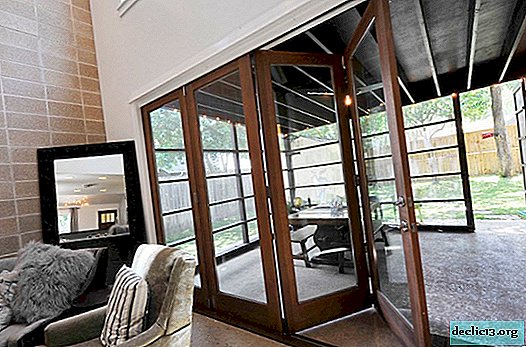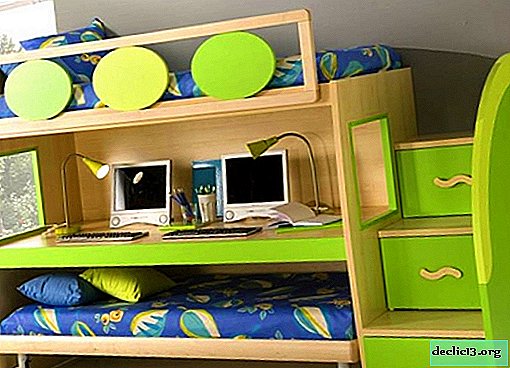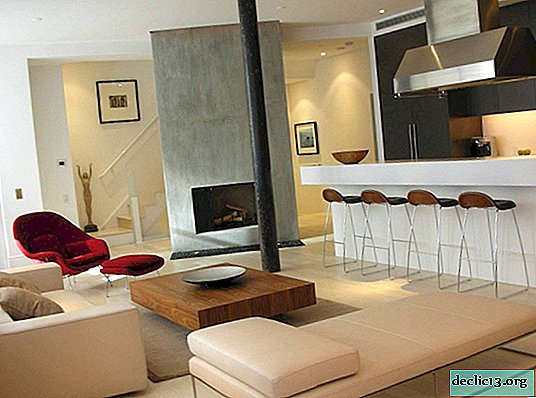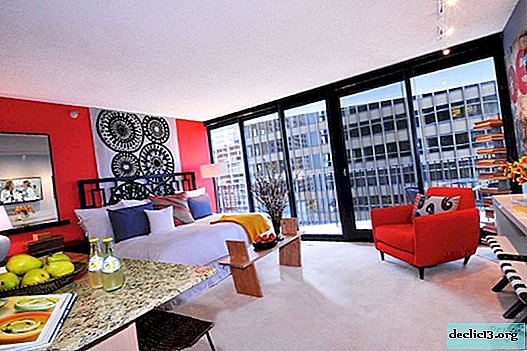Reichstag in Berlin - the horror of fascism and a symbol of united Germany
The Reichstag in Berlin ... People all over the world know about the existence of this building, but not everyone knows its history. What is the German Reichstag, how was it built, what does it look like now, what does it mean for Germany?
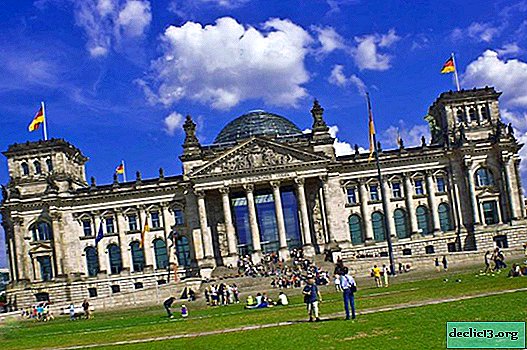
The word "Reichstag" in German means "state assembly", and it was the state parliament of the German Empire under the name "Reichstag" that worked in this building from 1894 to 1933. Now such a body no longer exists; since 1999, the Bundestag, the new government of the Federal Republic of Germany, has been working in the Reichstag.
Interesting fact! The name of the building has always been capitalized, while the name of the parliament that works in it is capitalized.
Now the Reichstag in the German capital Berlin is one of the most important city attractions. This building attracts many people with its rich historical past, inextricably linked with the history of Germany and the events of World War II.
Reichstag story

In 1871, several dozen independent states in which the German population lived united and created the federal state German Empire. On this occasion, it was decided to build a magnificent building in which the parliament of the new state could sit. The most suitable place for such a building in Berlin was Kaiser Square by the river. But the area was private property owned by diplomat Radzinsky, and he did not give permission for construction. Only 3 years after the diplomat died, permission was obtained from his son.
StartThe Reichstag building in Berlin began to be erected in June 1884, and the symbolic “first stone” was laid by Kaiser Wilhelm I. Construction work lasted 10 years and was completed during the reign of Kaiser Wilhelm II.

In the new building, which was being built in accordance with the project of Paul Vallot, all the technical achievements of that time were applied: centralized heating with temperature sensors, electric fans, water supply, own electric generator, telephones.
Interesting fact! 24,000,000 Reichsmarks were spent on construction work.
In 1916, when the First World War was fought, a new inscription appeared on the front outer wall of the building, which is considered a symbol of German unity. "The German people" - that is what is written on the Reichstag in Berlin.
After 2 years, the creation of the Weimar Republic was announced, whose government was based in the Reichstag.
In the last days of February 1933, a fire broke out in the Reichstag. It is not known exactly who exactly set the building on fire, but the National Socialists have indicted the Communists - this is how Hitler and his associates dealt with their political opponents.

Interesting fact! The fire, the elimination of the Communists and the rise of Hitler took place shortly before the parliamentary elections - they were scheduled for March 5.
The dome was slightly renovated, and the plenary hall and the adjoining premises, which suffered the most, decided not to touch. The main part of the premises was not affected by the fire at all, and since 1935 the Reichstag administration worked there, and various propaganda exhibitions were organized.
World War II periodSince 1939, the Reichstag premises were used simultaneously for different purposes: there was a bomb shelter (all the windows were walled up for this), the hospital was working, the Charite maternity hospital was in the basement, AEG was engaged in the production of electric lamps, the corner towers were converted for anti-aircraft.

The Soviet government declared the Reichstag the main symbol of Nazi Germany, and at the very end of the war, very fierce battles took place around it. Soviet troops equated the destruction of the Reichstag with the victory over fascism. The first scarlet flag was hoisted over this building in the evening of April 30, 1945, two more banners were hoisted at night. The fourth banner, which appeared on the morning of May 1, is known as the Victory Banner.
As evidence of their triumph, soldiers of the Soviet Army left numerous inscriptions on the walls of the Reichstag. These were the names and ranks of servicemen, the names of their hometowns, as well as inscriptions of a very obscene nature.
After the war ended, the dilapidated Reichstag ended up in West Berlin, and until 1954 he remained almost completely oblivious. They paid attention to him only because there was a threat of collapse of the remains of the dome. To prevent the tragedy from happening, the Reichstag dome in Berlin was simply blown up.

Immediately a decision was made to carry out repairs, but it did not work out to agree on what purposes the building should be used for. As a result, restoration work began only after almost 20 years. At the same time, most of the decorative elements were removed from the walls, the plenary room was completely restored, and finally decided not to restore the dome.
In 1971, the Winning States adopted the Quadripartite Agreement Relating to West Berlin. According to him, the Bundestag was forbidden to work in the Reichstag. Meetings of factions and events with the participation of delegates from Bonn were periodically organized there.
Reunification of GermanyIn the summer of 1991, 7 months after the reunification of Germany, the Bundestag occupied the Reichstag building for its work. It was necessary to carry out the next reconstruction of the historical building.
Interesting fact! In order to choose an architect who would lead the reconstruction, a competition was announced in Berlin. Received 80 applications. The winner was the Englishman Norman Foster - a lord by birth, educated as an architect.

According to the initial repair project, the roof of the Reichstag was supposed to remain flat, without a dome. But in this case, the building would not have looked majestic, so it was decided at the council of the Bundestag that a grandiose glass dome should be present.
Norman Foster managed to develop a project that would harmoniously combine in the Reichstag its historical important details and modern openness of the premises.
Interesting fact! Reconstruction work cost 600 million marks.
The Reichstag was inaugurated in 1999.
Compare accommodation prices using this form
What does the Bundestag look like today

If you look at the photo of the Reichstag in Berlin today, it can be noted that the appearance of the facade is in the style of Ancient Rome: at the entrance there are powerful columns with a portico, bas-reliefs. The towers are set 16 allegorical sculptures depicting various aspects of life in Germany.
Now the Reichstag building in Berlin is divided into levels:
- basement - technical, technical equipment devices are located there;
- the first level is the parliamentary secretariat;
- on the second floor there is a spacious meeting room;
- the third floor is for visitors;
- on the fourth floor - the presidium;
- fifth floor - fractional;
- roof-terrace and a huge transparent dome.
For convenient orientation, the idea of artist Per Arnoldi was realized: each floor has doors painted with paint of a certain color.

Even the photo shows that the Reichstag building in Berlin now looks surprisingly easy, and this is for all its scope! The lightness effect is formed thanks to modern materials that were used in construction: decorative concrete, natural white and beige stones with a silver tint, seemingly weightless steel structures, a lot of glazed areas.
DomeAs already noted, the main decoration of the Reichstag was a grandiose dome with a height of 23.5 meters and a diameter of 40 meters. It is made of metal, very durable glass, as well as special mirrors that transmit light. The transparency of the glass changes depending on the ambient light and is automatically adjusted using a computer program. The central part of the dome is occupied by a glass funnel - this is not just a futuristic decorative element, but an important part of the energy-saving construction system.

Around the dome there is a spacious terrace, on which everyone can enter and close to see a spherical grandiose structure. In fact, the terrace is an observation platform from which the meeting room is visible and a magnificent panorama of Berlin is visible. In fine weather, you get very beautiful photos from the Reichstag terrace in Berlin.
2 pedestrian spiral ramps and 2 large elevators lead to the dome and terrace.
Wall of memoryAdvice! Near the dome is the Kafer restaurant, which welcomes visitors from 9:00 to 16:30 and from 18:00 to 0:00. It is better to book a table in advance!

In the Reichstag there are several "Walls of memory" - the so-called fragments of surfaces on which inscriptions of Soviet soldiers have been preserved since the Second World War. The Bundestag discussed the possibility of removing inscriptions during the reconstruction, but most voted against this step.
Nevertheless, the "restoration of Soviet graffiti" still took place: the inscriptions with obscene and racist content were removed, leaving 159 graffiti. Traces of burning, “autographs” of bullets written by soldiers, their names and military ranks, are preserved on the “Walls of Remembrance”.
To protect all the inscriptions from the weather and vandals, the wall surfaces were covered with a special glassy mortar.
Photos of murals on the walls of the Reichstag in Berlin are on the Internet and in many print publications. Tourists visiting the Reichstag can watch them live. But you need to take into account that almost all the paintings are inside the building, where you can go only with a guide.
How to get to the Reichstag

Interesting fact! The Bundestag of Germany is the most visited parliament on Earth. According to statistics, from 2002 to 2016 there were 35.3 million visitors.
The Reichstag stands practically in the center of Berlin, the address is: Platz der Republik 1, 10557 Berlin, Germany.
How can a tourist get to the Reichstag in Berlin? "- this question is of interest to many. For tourists, the following programs are now available:
- a lecture (45 minutes) in the gallery overlooking the plenary room, and then a visit to the dome;
- a visit to the dome and a tour of the Reichstag (90 minutes) accompanied by a guide;
- visiting the dome and the observation deck (with an audio guide).
You can get to any of these programs for free, but only by appointment - you need to register approximately 1-3 months before the planned visit. Record in the Reichstag in Berlin is carried out in a special tourist office near the attraction, as well as on the official website of the Bundestag //www.bundestag.de/en. And it’s better to immediately open the page for writing //visite.bundestag.de/BAPWeb/pages/createBookingRequest/viewBasicInformation.jsf?lang=en.

When making an appointment for an excursion to the Reichstag in Berlin, it is very important to correctly indicate all the data, because at the entrance, passports and invitations are carefully checked. The invitation is sent to the mail a couple of days after the online application is submitted, and it needs to be printed.
Advice! When applying, you must specify the language of the tour. Excursions in Russian are conducted, but not often, and if the group is not recruited, the tour can be canceled altogether. Therefore, it is best to choose English, especially since you can use the audio guide in Russian for free.
The Reichstag in Berlin is open to visitors every day from 8:00 to 24:00, the last entrance is possible at 21:45. You need to come about 15 minutes before the appointed time in the invitation in order to complete the entire verification procedure.
Guided tour of the Reichstag.


